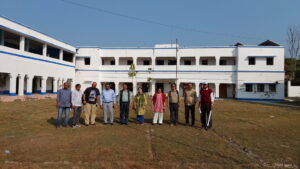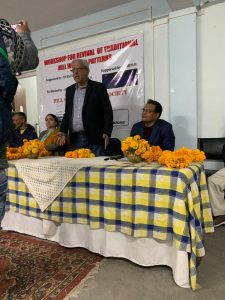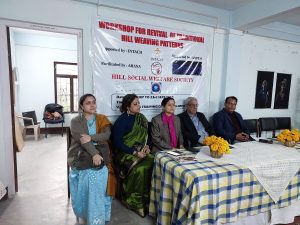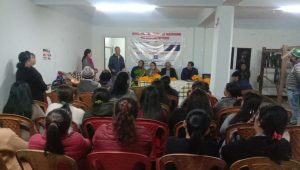
- Drive a resilient and green supply chain
- Enable connected and sustainable supply chain and distribution modeling
- Enable design thinking-led supply chain collaboration between stakeholders
Industry experts and market analysts have been observing a dramatic shift from traditional sequential strategy hierarchies toward green supply chain. With the advent of Industry 4.0 technologies, widespread data availability, and increasingly sophisticated data analytics, what used to be a linear process has since become an interconnected, iterative, and cyclical network of practices. Organizations are drawing sustainable supply chain management best practices in-line with their ESG strategy. This involves optimizing green SCM.
This industrial shift combined with the many uncertainties brought on by the pandemic has made it clear that in order to survive and thrive in this new reality, organizations have to build a resilient supply chain in accordance with purpose-driven, sustainable business practices. There’s an immediate need for not just process improvement but also built-in preparedness for the future.
Our flagship product – AmploFly4.0™ offers a single platform that accepts outside-in data as well as systems data from all stakeholders and collaborators in the ecosystem, outperforming human comprehension. It comprises 5 modules and offers data-enabled visibility, competitive awareness, and measured outcomes. Proprietary IP enabled AI/ML algorithms are applied for industry benchmarking, case simulation, identifying pain points, and mockups for digital twinning. It fosters a connected ecosystem of products, operations, data, and experience enabling a sustainable and transparent value chain.
Explore business modeling frameworks to define your problems and enable sustainable and green supply chain 4.0
Here are some ways in which AmploFly4.0TM delivers value through improved Supply Chain Management:
- Gap-analysis: Evaluate capabilities by industry benchmarking and discover areas of improvement through process decomposition and capability modeling.
- KPI setting: Establish and monitor KPIs for effective resource management, to identify pain points, minimize expenditure.
- Connected operations: Dissolve internal silos by facilitating the flow of data across the company for improved collaboration, communication, and operational strategy.
- Continuous Improvement: Utilize real-time data and AI to identify potential disruptions and ensure business process management and process continuity.
- Solution-oriented: Solve business problems using the design thinking process for innovative project implementation, product delivery, and circular materiality.
Our product breaks down supply chain management into its core components: Change Management, Portfolio Management, Project Management, Agile Program Management, and Earned Value Management.
AmploFly4.0 can be leveraged to evaluate materiality risk and strategize the capability of the organization and eliminate inefficiencies through the use of data and Design Thinking to generate useful and actionable insights.
To know more visit the Supply Chain Management FAQ’s page.
Supply Chain Use Case I
A large healthcare provider looked to improve their cash flow and their 340B compliance
Situation
The company’s pharmacy team lacked the bandwidth and tools needed to effectively monitor the performance of its site-based teams and purchasing partners. Over the past few years, it had launched a number of programs aimed at closing this gap with inconsistent results. They were confident that optimizing their medication acquisition monitoring process would help reduce the cost of service from their wholesaler while increasing opportunities for tier pricing reduction. The company was also seeking potential savings through the optimization provided by class of trade purchasing and improved tracking and 340B compliance.
Contributing Factors
Processes, all conducted manually, were disparate. KPIs were not set correctly. No tracking of inventory sources existed. Their business model lacked integration between the inpatient and outpatient pharmacy.
Challenges
The organization was struggling to manage 340B compliant inventory movement and, in turn, the cost of their pharmacy supply chain. Also, ineffective management of their pharmacy integration with corporate hospital groups was resulting in critical cost and revenue leakage.
Modularized Solution from Amplo Global Inc.
An AmploFly4.0 TM -led transformation streamlined the pharmacy supply chain, enhancing company profitability and the overall patient experience. That transformation first focused on planning, procuring, storing, moving and paying for goods and services more efficiently. With increasing sophistication, the focus shifted to increasing effectiveness and responsiveness.
Additional Benefits
As a result of the AmploFly4.0 TM journey, a new framework was developed to maximize existing technology and automate repetitive and mechanical tasks. The creation of a Balanced Scorecard for measuring and tracking KPIs for employees increased efficiency and improved productiveness. User experience scoring confirmed employee satisfaction.
Supply Chain Use Case II
A manufacturing leader sought greater quality control and measurable improvement in Overall Equipment Effectiveness
Situation
The manufacturing and digital team of a global industrial goods producer recognized
that a defined strategy would lead to improving overall equipment efficiency. They
identified the need to monitor assets and processes in real-time in order to leverage
the resulting all-important real time analytics.
Contributing Factors
A lack of digital connectivity (process, people, platform and machine) within their manufacturing processes as well as an unacceptable level of documentation management clearly were inhibiting progress. There was also limited detailed workflow analysis as well as no clear identification of the levers that yielded the biggest value impact.
Challenges
All 45 stores required to have a modularity in construction to have TAT of 4 weeks at site post agreement sign off irrespective of any location, any size and any profile. Additionally, predictions were to launch 500 stores in 3 years and were needed to be digitally connected to enable daily updates of progress.Modularized Solution from Amplo Global Inc.
The organization’s processes were analyzed and scored as part of AmpMarking. Engaging the FPM (Function Process Matrix) and Performance Measuring helped to identify the processes that would generate the biggest impact. Equipment processes and downtime management were selected for digitization. That approach helped the company realize previously lost potential, improving the OEE from 60% to 63% and growing the plant’s profits by 35%.
Additional Benefits
The organization is now considering a potential application to other underperforming areas related to their supply chain and usage of working capital.
Supply Chain Use Case III: Life Cycle Analysis for Cereal Bar Manufacturing
Overview:
A Consumer Packaged Goods (CPG) company specializing in cereal bar manufacturing conducted a Life Cycle Analysis (LCA) to evaluate the environmental impacts of its product throughout its life cycle. The company aims to identify opportunities to reduce environmental footprint, enhance sustainability, and make informed decisions to optimize its operations.
Stakeholders:
CPG Company: Responsible for manufacturing, packaging, and distributing cereal bars.
Suppliers: Provide raw materials such as grains, nuts, fruits, and packaging materials.
Consumers: Purchase and consume cereal bars.
Regulatory Authorities: Set environmental regulations and standards.
Program Execution:
Scope Definition:
Define the boundaries and scope of the LCA study, including the functional unit (e.g., one cereal bar), system boundaries (cradle-to-grave), and impact categories (e.g., greenhouse gas emissions, water usage, energy consumption).
Inventory Analysis:
Collect data on all inputs and outputs associated with cereal bar production, including raw materials sourcing, manufacturing processes, transportation, packaging, distribution, use phase, and end-of-life disposal.
Inventory data may include energy consumption, water usage, emissions (e.g., greenhouse gases, air pollutants), waste generation, and resource consumption.
Impact Assessment:
Evaluate the environmental impacts of cereal bar production using impact assessment methods such as Eco-indicator 99, Recipe, or others.
Assess impacts across various categories such as global warming potential (carbon footprint), eutrophication, acidification, resource depletion, and human health.
Interpretation:
Interpret the LCA results to identify hotspots, or stages of the life cycle with the highest environmental impacts.
Analyze trade-offs and identify opportunities for improvement, such as reducing emissions, conserving water, optimizing packaging, or sourcing sustainable raw materials.
Improvement Strategies:
Develop and implement strategies to minimize environmental impacts and improve sustainability throughout the cereal bar life cycle.
Examples include optimizing manufacturing processes for energy efficiency, sourcing organic or sustainably sourced ingredients, reducing packaging material, optimizing transportation logistics, and promoting recycling or composting of packaging.
Communication and Reporting:
Communicate LCA findings, improvement strategies, and sustainability initiatives to internal stakeholders, suppliers, customers, and regulatory authorities.
Provide transparent and credible information to consumers through product labeling, marketing materials, and corporate sustainability reports.
Benefits:
Enhanced Environmental Performance: Identify opportunities to reduce environmental impacts and enhance sustainability across the cereal bar life cycle.
Cost Savings: Optimize resource use, reduce waste, and improve efficiency to achieve cost savings in production and operations.
Stakeholder Engagement: Demonstrate commitment to sustainability and transparency, fostering trust and loyalty among stakeholders.
Regulatory Compliance: Ensure compliance with environmental regulations and standards, reducing the risk of fines, penalties, and reputational damage.
Conclusion:
Conducting a Life Cycle Analysis for cereal bar manufacturing enables the CPG company to gain insights into its environmental footprint, identify opportunities for improvement, and make informed decisions to enhance sustainability and reduce environmental impacts throughout the product life cycle. By implementing improvement strategies and engaging stakeholders, the company drove positive environmental outcomes while achieving business success.
Supply Chain Use Case IV: Asset Life Cycle Analysis for Server Manufacturing
Overview:
A hi-tech company specializing in server manufacturing conducted an Asset Life Cycle Analysis (LCA) to assess the environmental and economic impacts associated with its server products throughout their life cycle. The analysis aims to identify opportunities for optimization, resource efficiency, and sustainable practices in server design, production, use, and end-of-life management.
Stakeholders:
Hi-Tech Company: Responsible for designing, manufacturing, and distributing servers.
Suppliers: Provide raw materials, components, and manufacturing services.
Customers: Purchase and use servers for various applications.
Regulatory Authorities: Set environmental regulations and standards for electronic products.
Program Execution:
Scope Definition:
Define the boundaries and scope of the Asset LCA study, including the functional unit (e.g., one server), system boundaries (cradle-to-grave), and impact categories (e.g., carbon footprint, resource consumption, economic costs).
Inventory Analysis:
Collect data on all inputs and outputs associated with server manufacturing, including raw materials extraction, component production, assembly, transportation, use phase, maintenance, upgrades, and end-of-life disposal.
Inventory data may include energy consumption, water usage, emissions (e.g., greenhouse gases, air pollutants), waste generation, and resource consumption.
Impact Assessment:
Evaluate the environmental impacts of server manufacturing and operation using impact assessment methods such as Eco-indicator 99, ReCiPe, or others.
Assess impacts across various categories such as carbon footprint, energy efficiency, material efficiency, water usage, and economic costs.
Interpretation:
Interpret the LCA results to identify hotspots and areas for improvement in the server life cycle.
Analyze trade-offs and identify opportunities for optimization, such as reducing energy consumption, minimizing waste, extending product lifespan, and improving end-of-life management practices.
Improvement Strategies:
Develop and implement strategies to minimize environmental impacts and improve resource efficiency throughout the server life cycle.
Examples include designing energy-efficient servers, optimizing manufacturing processes, sourcing sustainable materials, reducing packaging waste, implementing server virtualization, and promoting server recycling or refurbishment.
Communication and Reporting:
Communicate LCA findings, improvement strategies, and sustainability initiatives to internal stakeholders, suppliers, customers, and regulatory authorities.
Provide transparent and credible information to customers through product labeling, environmental certifications, and corporate sustainability reports.
Benefits:
Environmental Performance: Identify opportunities to reduce environmental impacts and promote sustainability in server design, manufacturing, and operation.
Cost Savings: Optimize resource use, improve efficiency, and extend product lifespan to achieve cost savings in production, operation, and maintenance.
Customer Satisfaction: Demonstrate commitment to sustainability and responsible business practices, enhancing brand reputation and customer loyalty.
Regulatory Compliance: Ensure compliance with environmental regulations and standards for electronic products, reducing the risk of non-compliance penalties and reputational damage.
Conclusion
Conducting an Asset Life Cycle Analysis for server manufacturing enables the hi-tech company to assess and improve the environmental and economic performance of its server products throughout their life cycle. By implementing sustainability initiatives and engaging stakeholders, the company achieved environmental stewardship, economic efficiency, and long-term business success in the rapidly evolving hi-tech industry.

































































